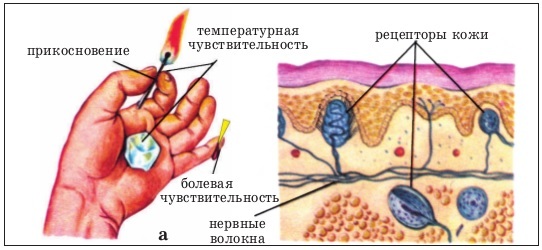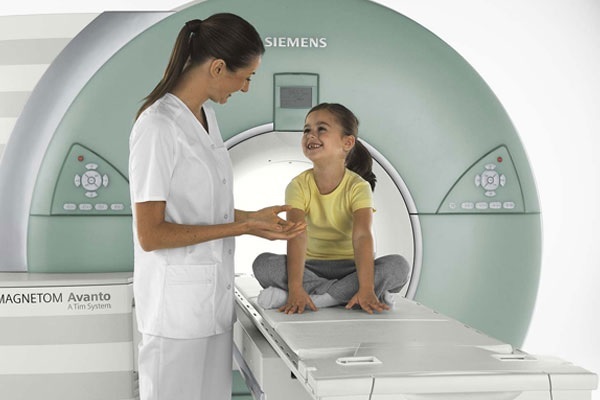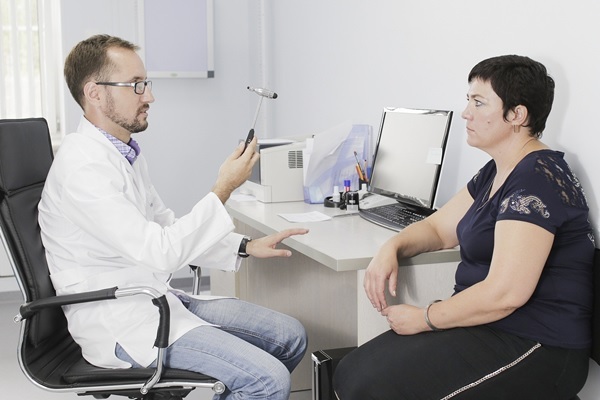Endoscopy of the gastrointestinal tract: esophagoscopy, gastroscopy, duodenoscopy, intestinal endoscopy
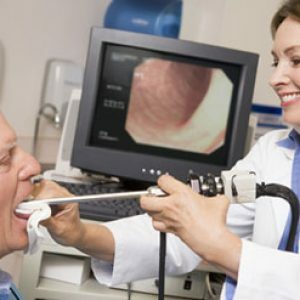
Endoscopy is one of the methods of studying hollow organs and various body cavities.For her use as natural openings of the body( mouth, anus, vagina), and artificial - created by the doctor during the operation.In the latter case, the procedure is called laparoscopy.
Table of contents: What can be seen in the endoscopy of the digestive tract EsophagoscopyThe endoscope is a flexible tube with a video camera at the end and a flexible fiber inside that can transmit the image from the micro camera directly to the monitor.Those.The doctor can see the condition of the internal hollow organs.
Video endoscopes are widely used at present.They provide a high-quality image and can contain additional functions, for example, ultrasound .The doctor can immediately examine the mucous GIT and is able at this time to check the accuracy of the preliminary diagnosis.No other methods provide a similar result.
One of the advantages of endoscopy is atraumaticity, therefore, the patient leaves the hospital immediately after the procedure.
Therefore, it is prescribed not only in the presence of a diagnosis, but also for preventive purposes, in order to identify possible diseases in the early stages.Carrying out of endoscopy before surgical intervention helps to exclude the possibility of complications in the operational and postoperative periods.What can be seen in the endoscopy of the digestive tract
A qualified doctor with an endoscope can see any pathological changes in the mucosa of the hollow body .The obtained data allow not only to diagnose the disease, but also to track the dynamics of its development.This helps the doctor correctly adjust the treatment, taking into account the patient's susceptibility to drugs.
During the examination, the gastroenterologist can see such abnormalities of the digestive tract:
-
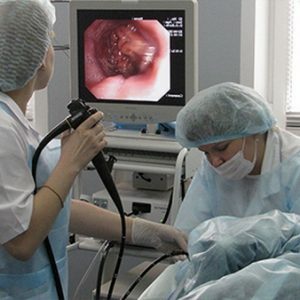 inflammation of the mucosa;
inflammation of the mucosa; - changes in the vessels;
- erosion, ulcers;
- polyposis, thickening of folds;
- pathological neoplasms.
The initial stage of most diseases does not change the X-ray and ultrasound, and the endoscopy examination always provides an accurate picture of the state of your digestive tract .
Often, doctors conduct a complete gastrointestinal examination, since a disease in one of the organs of the gastrointestinal tract can lead to unfavorable changes in the entire digestive system.Therefore, it is worth exploring and the esophagus, and stomach, and intestines.
Esophagoscopy
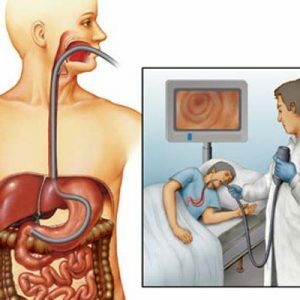 Esophagoscopy - endoscopic examination of the esophagus through the oral cavity .This study rarely appears separately, most often simultaneously examine the esophagus, stomach and 12-colon. All this method is called esophagogastroduodenoscopy.EGDS is carried out for diagnostic and therapeutic purposes.
Esophagoscopy - endoscopic examination of the esophagus through the oral cavity .This study rarely appears separately, most often simultaneously examine the esophagus, stomach and 12-colon. All this method is called esophagogastroduodenoscopy.EGDS is carried out for diagnostic and therapeutic purposes.
Diagnosis is performed in the presence of inflammation of the esophagus, which can cause burns, reflux( backward discharge of stomach contents into the esophagus);At possible oncological diseases.
For therapeutic purposes, use a rigid endoscope, which facilitates the introduction of additional endoscopic surgical instruments.It is necessary for the removal of polyposis growths, treatment of varicose veins of the esophagus, expansion of the existing narrowings of the internal aperture of the esophagus.
For emergency endoscopy of the gastrointestinal tract with the help of an esophagoscope resort to the presence of foreign bodies or bleeding in the upper sections of the gastrointestinal tract .
Preparation for esophagoscopy
The main condition for esophagoscopy is the presence of an empty stomach.This helps reduce the gag reflex.
The preparation for the procedure includes:
- a preliminary examination of the cardiovascular system;
- urine and blood tests;
- X-ray of the esophagus and stomach.
In the presence of dentures, they should be removed, and before the session - rinse your mouth with an antiseptic.
Please note : , an endoscopist doctor has the right to refuse a session in the event of non-compliance with training rules.
Contraindications to esophagoscopy
This kind of endoscopy of the gastrointestinal tract is prohibited if the following factors are present:
- cirrhosis in the enlarged veins of the lower esophagus;
- aortic aneurysm;
- stenosis of the esophagus, in which the introduction of the endoscope becomes impossible;
- strict bed rest with the requirement of absolute rest for heart defects in the stage of decompensation;
- stroke and heart attack in acute period.
Gastroscopy as a method of endoscopy of the digestive tract
This examination is also often carried out in conjunction with other endoscopic examinations of the upper segment of the gastrointestinal tract. Gastroscopy helps diagnose inflammation of the gastric mucosa, erosion, ulcers, polyps, oncogenes. Also, periodic gastroscopy is a kind of control of the effectiveness of the prescribed treatment.
Endoscopy of the gastrointestinal tract with the help of a gastroscopy is carried out and with
- the need for drug administration in the area of ulcer or inflammation,
- removal of polyposis formations and minor benign tumors,
- widening of the sphincter between the stomach and duodenum.
Preparation for gastroscopy
Preparation for endoscopic examination of the stomach should begin several days before the study, after consulting a doctor.The preparation includes the cancellation of certain medicines and alcohol.
Important: The time interval after the last meal and endoscopy of the gastrointestinal tract with the help of a gastroscopy - at least 10 hours.The last dishes should consist of easily digestible products.Usually gastroscopy is prescribed for the morning hours, therefore, it is necessary to have an easy dinner, and breakfast to cancel.
In the morning before endoscopy of the gastrointestinal tract it is allowed to drink half a glass of still water.Also the doctor can advise defoaming drugs( espumizan) to facilitate the procedure.
Patients with an increased level of anxiety are recommended to take sedatives( seduksen) for 3 hours before the session. In some cases, sedatives are administered immediately in the endoscopy room.
Contraindications to gastroscopy
Despite the wide application of this method of endoscopy of the digestive tract, as in any study, there are relative and absolute contraindications to the conduct. The temporary bans include acute inflammation of the ENT organs - angina, laryngitis, rhinitis. In this state, the study is postponed to the post-convalescence period.
Technical complications can cause stenosis of the esophagus, scars.To eliminate them, more thin endoscopes are used, and for stenoses of a severe degree, endoscopy is not used at all.
Absolute contraindications to gastroscopy:
- hypertensive disease( GH) of the third stage;
- blood disorders related to blood clotting disorder( hemophilia);
- aortic aneurysm;
- severe bronchial asthma;
- curvature of the spine;
- Mental abnormalities.
In this situation, apply other options, for example, ultrasound.
Duodenoscopy
This type of endoscopy of the gastrointestinal tract involves examination of the 12 duodenum.It is carried out most often for the purpose of diagnosing ulcers localized in this department of the digestive tract, and for the detection of congenital pathologies that interfere with the absorption of food.
Preparing for the
Study Unlike gastroscopy, before this type of endoscopy of the gastrointestinal tract, you do not need to eat a special diet or take medicine.It is worth not to eat only 5-6 hours before the session, and do not drink at least 2 hours.
Contraindications to duodenoscopy
The main contraindications for duodenoscopy do not differ from contraindications to the study of the stomach. It should be noted that any endoscopic procedures can not be carried out to patients who are in serious condition or have nasal breathing disorders.
Endoscopy of the intestine
As you know, the intestine has several main parts: thin, thick and rectum.To conduct a study of each of the departments there is a separate method.
Colonoscopy
The endoscope is inserted through the anus, which helps to examine the entire inner shell of the large intestine.This examination is of great importance in the diagnosis of oncology and precancerous diseases( polyps). This method is also used for therapeutic purposes - with local treatment of various pathologies, for the removal of polyps and benign neoplasms.
Capsule endoscopy of the digestive system
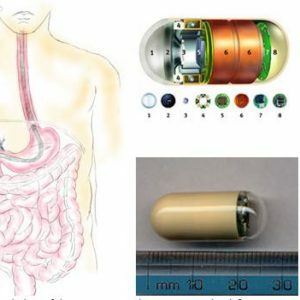 This diagnostic method has appeared relatively recently and has not yet gained wide popularity.With a small capsule( about 2 cm) with a built-in camera, doctors can examine the small intestine throughout its entire length.Unfortunately, so far only large clinics have such a device at their disposal.
This diagnostic method has appeared relatively recently and has not yet gained wide popularity.With a small capsule( about 2 cm) with a built-in camera, doctors can examine the small intestine throughout its entire length.Unfortunately, so far only large clinics have such a device at their disposal.
Preparing for intestinal endoscopy
To minimize the error during the diagnosis, several simple rules should be observed.
Cleaning of the intestine is important: one day before the endoscopy session, it is advisable to perform a cleansing enema or to take loosening medications.
A special food that excludes the following products will be a good help in preparation for this kind of endoscopy of the digestive tract:
- thermally unprocessed vegetables, fruits and berries;
- cereals;
- greens;
- beans;
- dairy products;
- black bread.
In days before the procedure, it is better to eat fish, sour-milk products, chicken meat.
Contraindications to intestinal endoscopy
Contraindications include :
- Severe ulcerative intestinal inflammation
- possible perforation( through hole in the intestine)
- toxic megacolon( abnormal enlargement of large intestine).
As you can see, endoscopy of the digestive tract is an important diagnostic and therapeutic measure.Its appearance and relevance are determined by the attending physician!
Natalia Tavaluk, medical observer of

